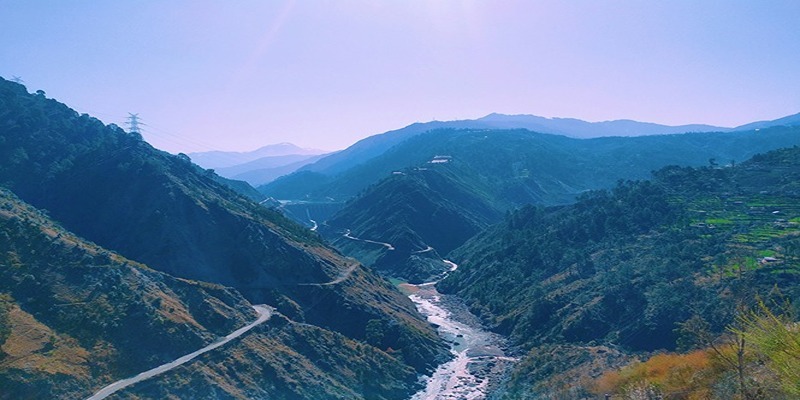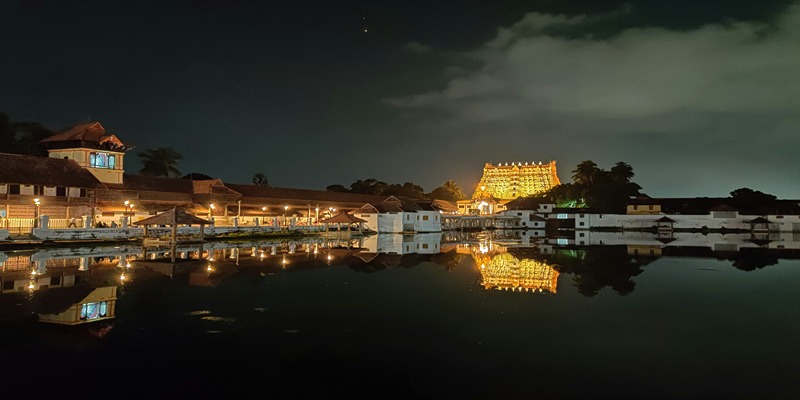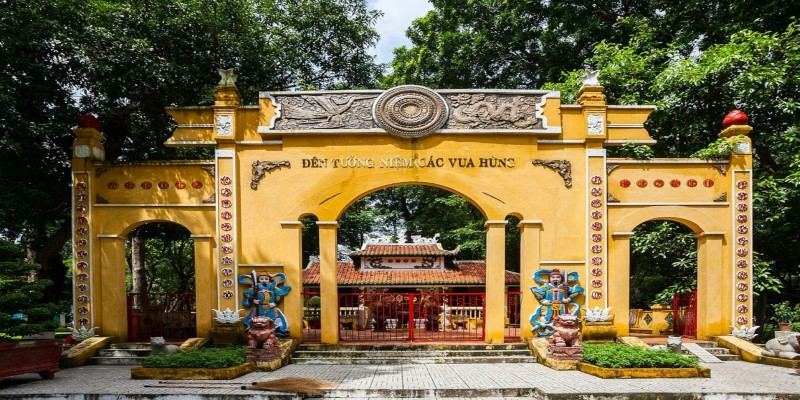Fastest High-Speed Trains in the World
Aug 06, 2024 By Juliana Daniel
High-speed trains represent the pinnacle of modern rail technology, offering rapid and efficient transportation across long distances. These marvels of engineering have revolutionized travel by reducing journey times and enhancing passenger comfort. From the pioneering Shinkansen in Japan to the cutting-edge Fuxing Hao in China, the world is home to some of the fastest trains, each showcasing remarkable advancements in speed and technology. This article explores the top high-speed trains across the globe, highlighting their innovations and contributions to modern travel. Whether you're a train enthusiast or a frequent traveler, these high-speed rail wonders offer an exciting glimpse into the future of transportation.
The Evolution of High-Speed Rail Technology
High-speed rail technology has evolved significantly since its inception, marking a transformative journey in transportation. The concept began with Japan's introduction of the Shinkansen, or "bullet train," in the 1960s, setting a new standard for speed and efficiency. Over the decades, advancements in materials, aerodynamics, and propulsion systems have propelled trains to achieve speeds exceeding 300 km/h (186 mph). Modern high-speed trains utilize advanced signaling systems and dedicated tracks to ensure safety and reliability. These innovations have not only shortened travel times but also reduced the environmental impact of transportation, making high-speed rail a preferred option for eco-conscious travelers.
Asia's Leading High-Speed Trains
Japan's Shinkansen: The Pioneer of Speed
Japan's Shinkansen, affectionately known as the "bullet train," revolutionized rail travel when it was launched in 1964. As the world's first high-speed train, the Shinkansen set new benchmarks for speed, safety, and punctuality. Today, the network spans across Japan, connecting major cities like Tokyo, Osaka, and Kyoto with speeds reaching up to 320 km/h (199 mph). The Shinkansen is renowned not only for its speed but also for its impeccable safety record and punctuality, with delays typically measured in seconds. This pioneering system has become a symbol of Japan's technological prowess and a model for high-speed rail systems worldwide.
China's Fuxing Hao: The Speed King
China's Fuxing Hao, meaning "Rejuvenation," represents the latest in high-speed rail technology. Operating on the Beijing-Shanghai route, the Fuxing Hao can reach speeds of up to 350 km/h (217 mph), making it one of the fastest trains in the world. The train is part of China's expansive high-speed rail network, which is the largest globally, covering over 35,000 kilometers. The Fuxing Hao boasts state-of-the-art features, including advanced aerodynamics, energy-efficient systems, and real-time monitoring technology. It offers a comfortable and swift journey, significantly reducing travel times between major cities and symbolizing China's rapid technological advancements in the rail industry.
South Korea's KTX: Blending Speed and Comfort
South Korea's Korea Train eXpress (KTX) combines high speed with exceptional comfort, providing an efficient and pleasant travel experience. Launched in 2004, the KTX operates at speeds of up to 305 km/h (190 mph), connecting key cities like Seoul, Busan, and Daegu. The train features modern amenities, including spacious seating, Wi-Fi, and dining services, making long-distance travel more enjoyable. The KTX's network continues to expand, with plans for new lines and faster trains. South Korea's commitment to enhancing its high-speed rail infrastructure reflects its broader goals of innovation and sustainability, positioning the KTX as a crucial part of the nation's transportation system.
Europe's High-Speed Rail Achievements
France's TGV: A Legacy of Speed
France's TGV (Train Grande Vitesse) is a trailblazer in high-speed rail travel, renowned for its speed and efficiency. Since its debut in 1981, the TGV has set numerous speed records, with the fastest reaching 574.8 km/h (357.2 mph) in 2007. The TGV network spans across France and into neighboring countries, making it a key player in European rail transport. Known for its sleek design and advanced technology, the TGV offers a comfortable and rapid transit option, connecting major cities like Paris, Lyon, and Marseille. It remains a symbol of France's innovation in rail travel.
Spain's AVE: Connecting Cities Swiftly
Spain's AVE (Alta Velocidad Espaola) is a high-speed rail service that connects the country's major cities with remarkable speed and comfort. Launched in 1992, the AVE network has rapidly expanded, now covering over 3,000 kilometers and connecting cities such as Madrid, Barcelona, and Seville. The trains travel at speeds up to 310 km/h (193 mph), making intercity travel fast and convenient. The AVE is known for its punctuality, luxury, and advanced safety features, including real-time monitoring systems. Spain's investment in high-speed rail has significantly enhanced its transportation infrastructure, promoting economic growth and regional connectivity.
Germany's ICE: Engineering Excellence
Germany's InterCity Express (ICE) trains represent the pinnacle of engineering excellence in high-speed rail. Operating at speeds up to 300 km/h (186 mph), the ICE network connects major German cities like Berlin, Munich, and Frankfurt, as well as international destinations. The ICE is celebrated for its precision, efficiency, and comfort, featuring state-of-the-art technology and luxurious interiors. With a focus on sustainability, the ICE trains are designed to be energy-efficient and environmentally friendly. Germany's commitment to maintaining and expanding its high-speed rail network ensures that the ICE remains a cornerstone of European rail travel.
High-Speed Rail Developments in Other Regions
High-speed rail developments are not limited to Asia and Europe; other regions are also embracing this technology. In the United States, the Amtrak Acela Express offers high-speed service along the Northeast Corridor, connecting cities like Boston, New York, and Washington, D.C. Saudi Arabia's Haramain High-Speed Railway links the holy cities of Mecca and Medina, providing a fast and comfortable travel option for pilgrims. As high-speed rail technology continues to evolve, more countries are investing in these systems to enhance connectivity, reduce travel times, and promote sustainable transportation.
Conclusion
High-speed trains have transformed the way we travel, offering fast, efficient, and comfortable journeys across the globe. From the pioneering Shinkansen in Japan to the cutting-edge Fuxing Hao in China and the iconic TGV in France, these marvels of engineering showcase the best of modern rail technology. As more regions invest in high-speed rail infrastructure, the future of travel looks faster and more sustainable than ever. Whether you're looking to explore new destinations or simply enjoy the thrill of high-speed travel, these trains offer an unparalleled experience that combines innovation, speed, and comfort.

JMost Photogenic Places in the World
Discover the most photogenic places in the world. Explore these must-visit spots for travel photographers.

JBu Gia Map: An Unforgettable Camping Adventure
Plan your next camping trip to Bu Gia Map National Park and explore Vietnam’s stunning landscapes, abundant wildlife, and serene natural beauty.

JWildlife Wonders in Kerala: A Southern Escape
Plan a southern holiday in Kerala to explore its diverse wildlife sanctuaries, immersing in nature's splendor.

JExploring 6 Stops on the Delhi-Jaipur Highway to Freshen Up
Get the most out of your road trip experience by using our guide to the greatest dhabas along the picturesque Delhi-Jaipur Highway.

JExploring the Hidden Gems of Darjeeling: Experiences You Won't Find in Any Travel Guide
Discover authentic exposure in Darjeeling that you won't find in any travel guide. Let us show you a side of this beautiful destination.

JRespect Santorini's Culture: Avoid This Popular Tourist Photo Spot
Tourists in Santorini should avoid this photo spot to respect local customs and avoid offending residents.

JDiscover Belur: A Journey to Its Most Captivating Sights
Travel to Belur and experience its architectural wonders. Explore temples and carvings in this historical town.

JExploring the Green Heart of Saigon: Tao Dan Park
Find out Tao Dan Park in Ho Chi Minh City, a green lung and urban oasis offering lush landscapes, cultural experiences, and recreational activities for locals and tourists alike.
 clearinfoy
clearinfoy